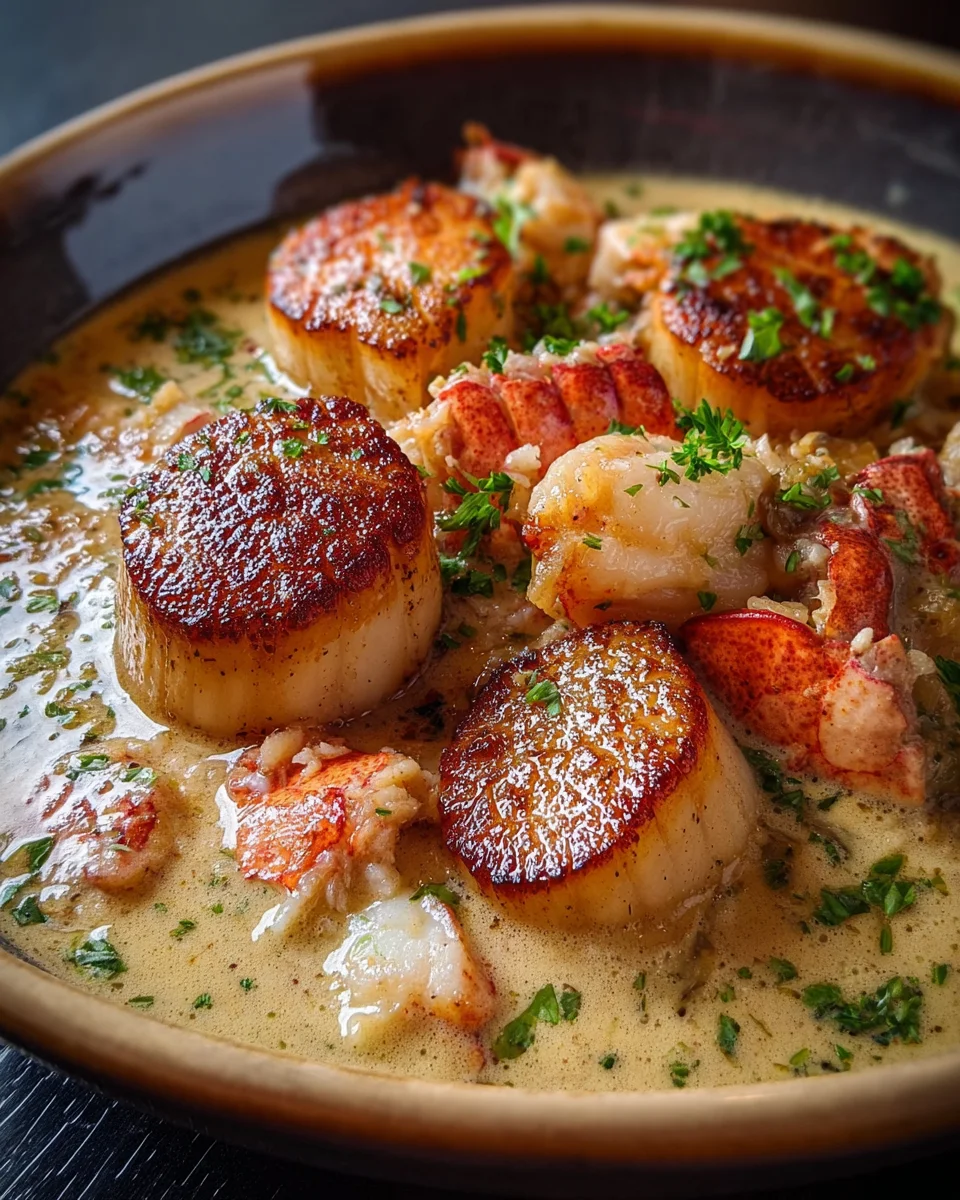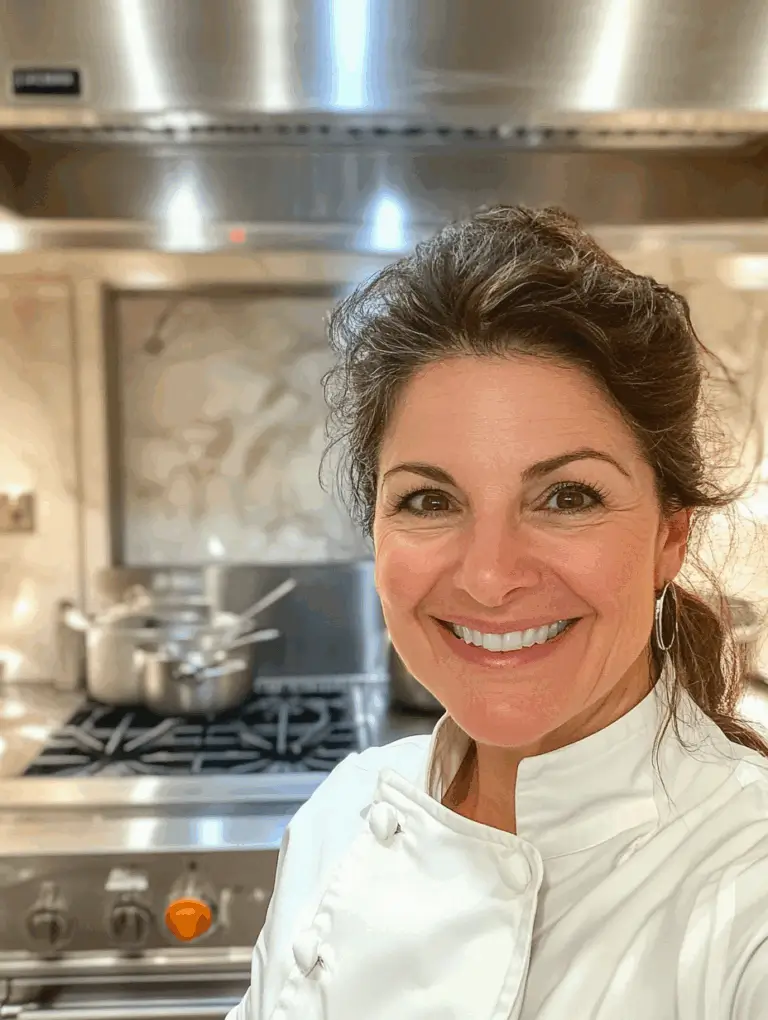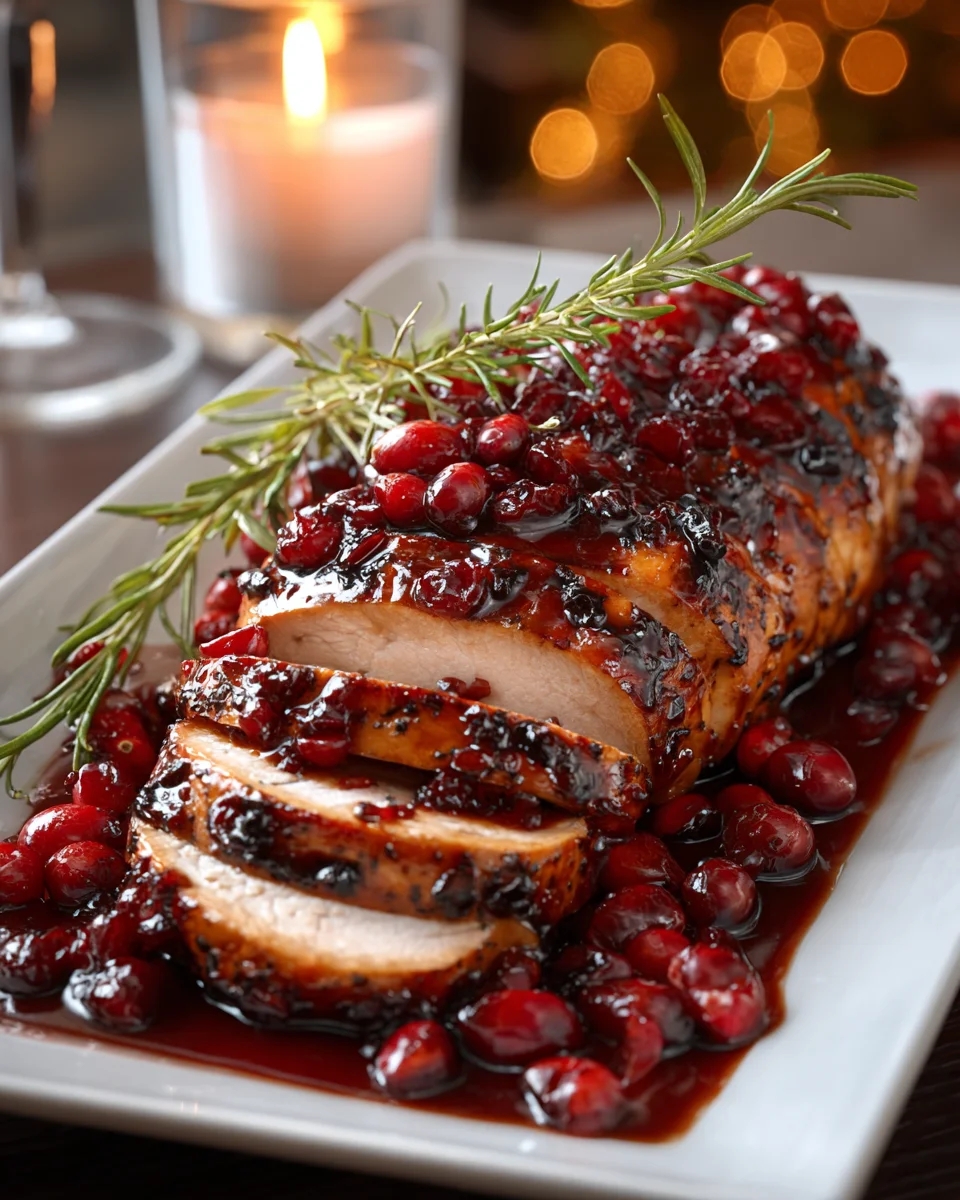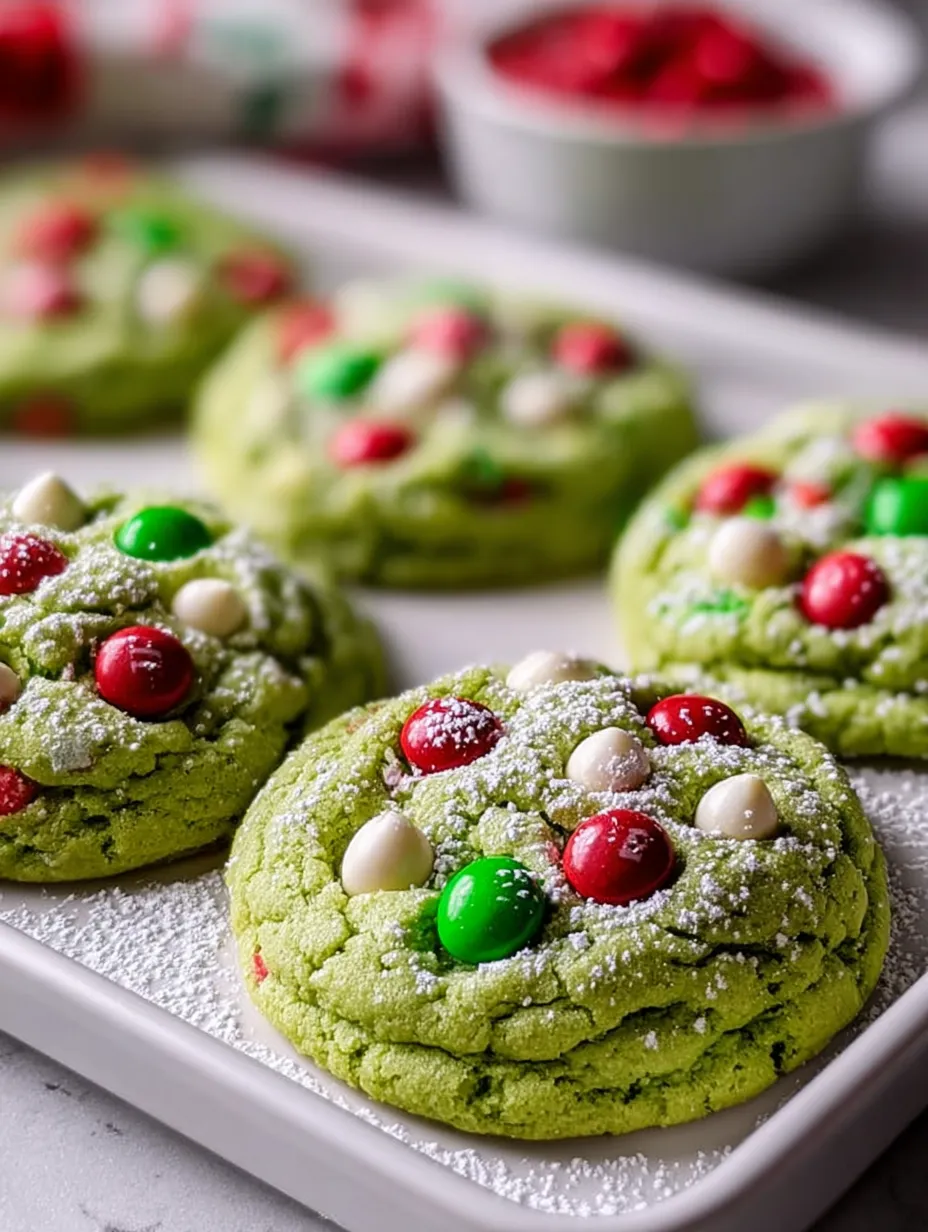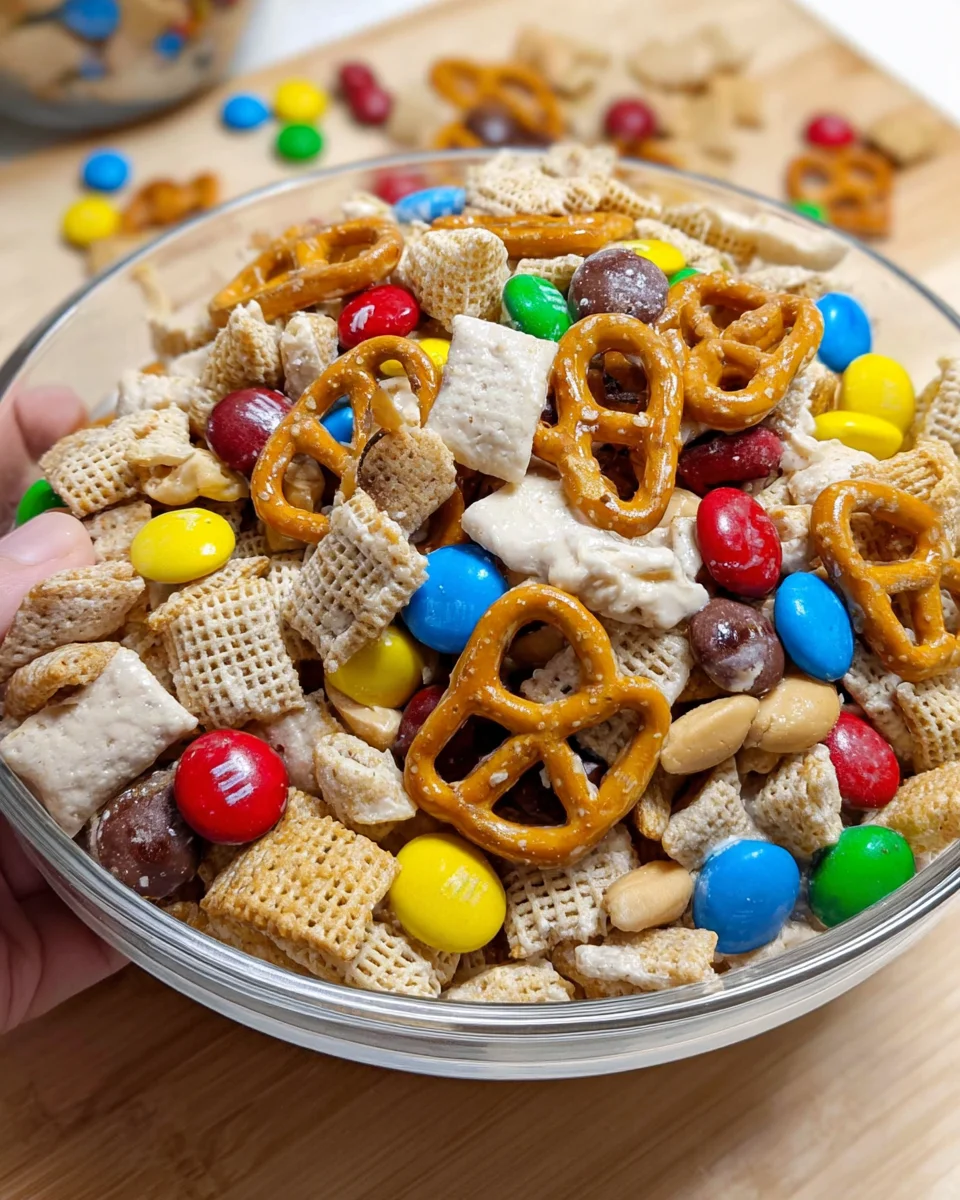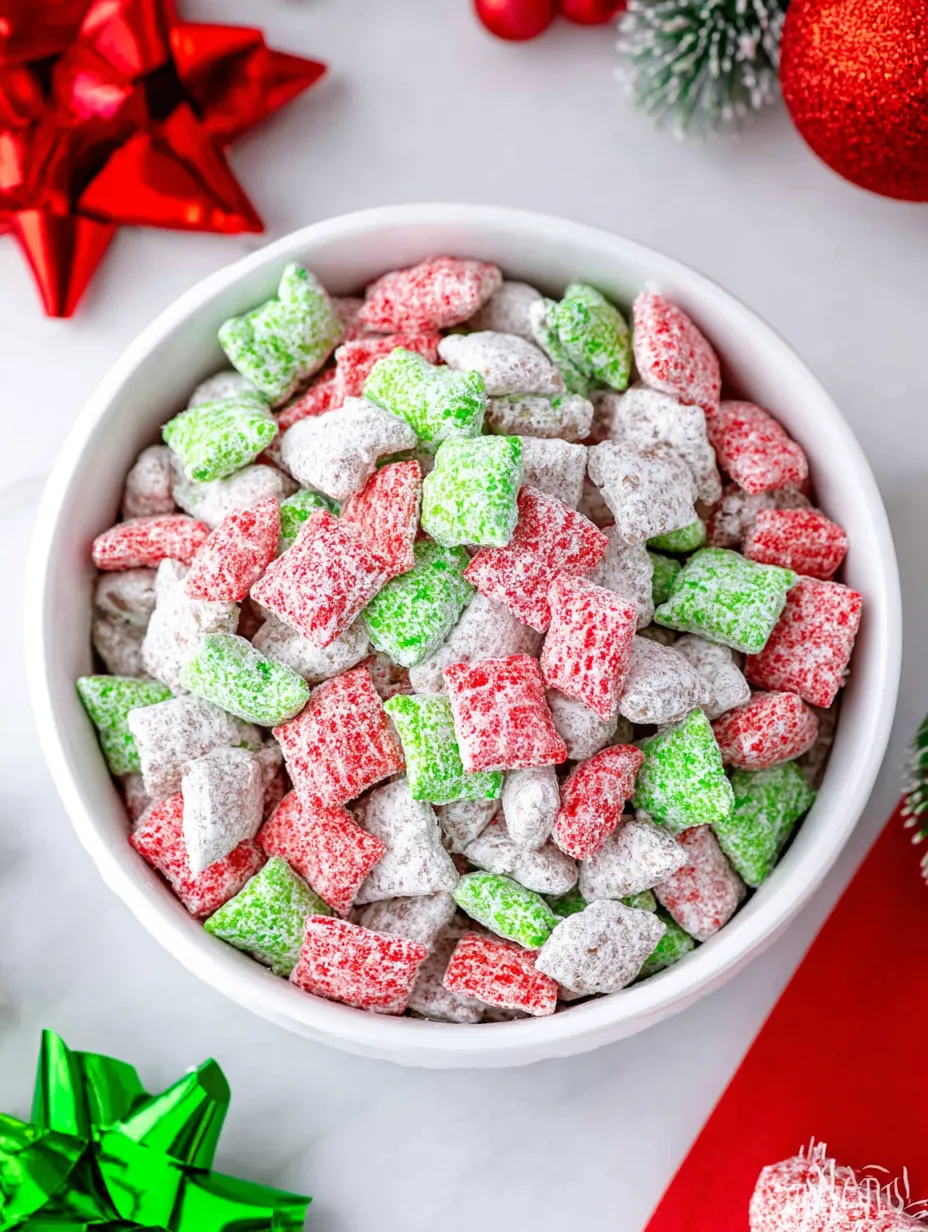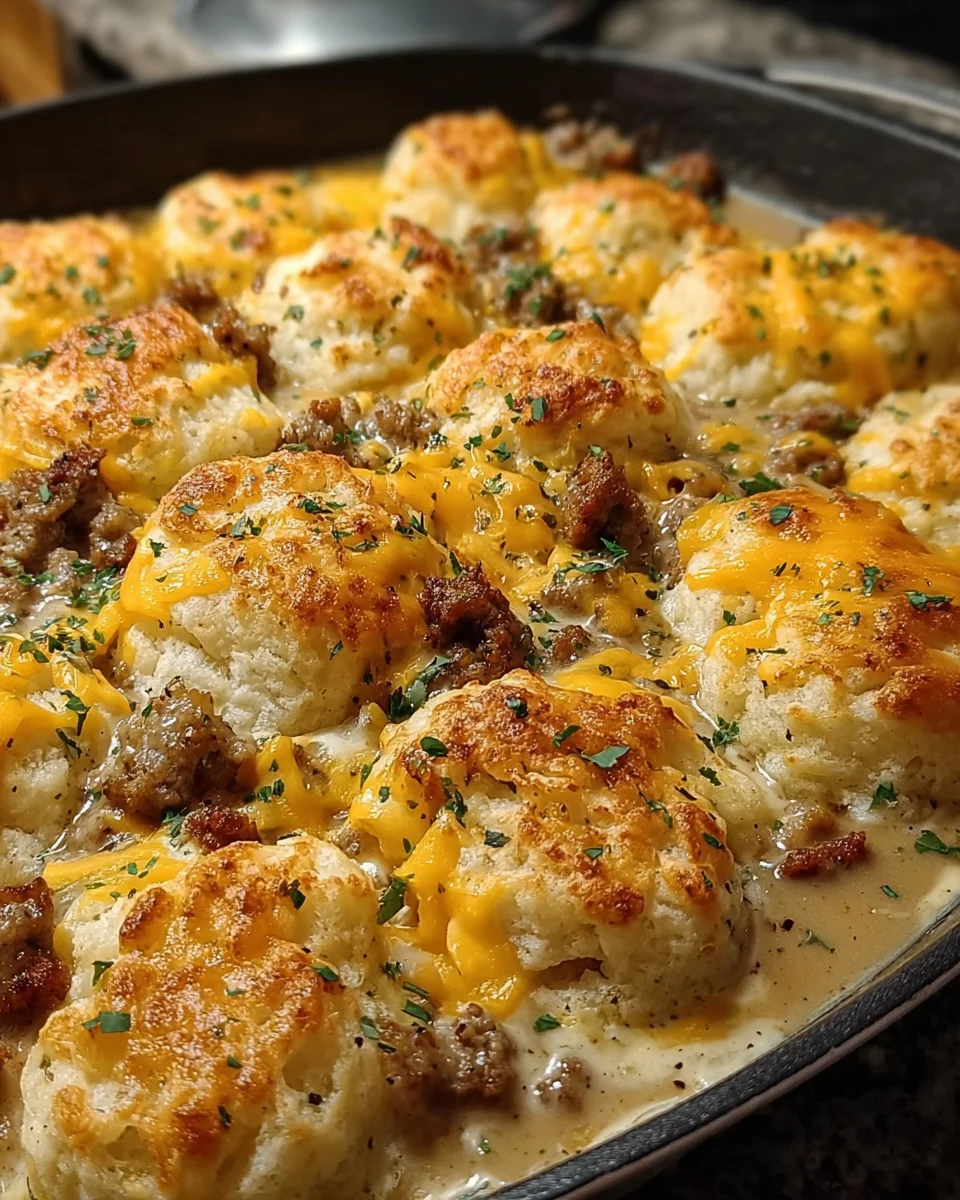Introduction to Lobster Scallop Chowder
When it comes to indulgent seafood dishes, few recipes rival the elegance and comfort of Lobster Scallop Chowder. This creamy, flavorful soup combines the sweetness of lobster, the tenderness of scallops, and the richness of a buttery broth for the ultimate coastal dining experience. Whether served at a fine-dining restaurant or prepared in your kitchen, it’s a bowl of luxury worth savoring.
What Makes This Chowder Special?
Unlike traditional clam chowder, this recipe takes things up a notch by incorporating premium seafood. The lobster brings a naturally sweet, buttery essence, while the scallops offer a delicate, melt-in-your-mouth bite. Combined with a creamy base infused with aromatics, herbs, and just the right touch of spice, every spoonful delivers layered flavors that feel both comforting and decadent.
The Origins of Seafood Chowders
Chowder has long been a staple in coastal communities. Historically, fishermen made hearty soups with whatever catch was available, thickened with potatoes and cream. Today, seafood chowders—especially lobster-based ones—have become iconic in New England cuisine, celebrated for their creamy textures and briny flavors. This modern lobster and scallop chowder honors tradition while elevating it with gourmet flair.
Key Ingredients That Define the Flavor
Lobster: Sweetness from the Sea
Lobster meat brings natural richness, especially when paired with butter. For the best chowder, use fresh lobster if possible, though frozen lobster tails work in a pinch.
Scallops: Tender and Delicate Bites
Sea scallops add a luxurious, silky texture. Halve larger scallops to ensure even cooking and avoid rubbery results.
Aromatics and Vegetables for Depth
Onions, celery, and carrots form the classic mirepoix base, while garlic and potatoes provide heartiness. These vegetables balance the richness of the cream and seafood.
Cream, Stock, and Wine: The Flavor Base
Seafood stock intensifies the oceanic flavor, while cream and milk provide velvety smoothness. A splash of white wine adds acidity and depth, preventing the chowder from feeling too heavy.
Step-by-Step Guide to Making Lobster Scallop Chowder
Preparing the Aromatics
Begin by sautéing onion, celery, and carrots in butter and olive oil until fragrant. This step lays the foundation of flavor.
Building the Creamy Chowder Base
Add potatoes, seasonings, and wine. Allow the wine to reduce before introducing the seafood stock. Simmer until the potatoes are fork-tender.
Cooking and Adding the Seafood
Stir in heavy cream and milk gently—avoid boiling, as dairy can curdle. Add lobster and scallops last, cooking just long enough for scallops to turn opaque.
Final Touches for Restaurant-Quality Flavor
Season generously with salt, black pepper, and a pinch of cayenne. Finish with chopped parsley and serve with lemon wedges for brightness.
Cooking Tips for Perfect Chowder Every Time
Cooking chowder may seem straightforward, but achieving that restaurant-quality finish takes a few smart techniques.
Preventing Overcooked Seafood
Both lobster and scallops are delicate proteins that can turn rubbery if overcooked. Always add them towards the end of cooking and simmer gently until scallops are opaque and lobster is just warmed through.
Balancing Creaminess and Seafood Essence
The base should be luxuriously creamy but not overpowering. Too much cream can mask seafood flavors. Using half cream and half milk creates balance while still keeping richness.
Adjusting Seasoning for Your Palate
While Old Bay seasoning adds classic coastal flair, you can adjust spice levels. Add cayenne for heat, smoked paprika for depth, or a splash of lemon juice for brightness.
Variations of Lobster Scallop Chowder
Every cook puts their own spin on chowder. Here are some popular variations:
New England–Style Lobster Chowder
Stick closer to tradition by thickening with flour or cornstarch for a denser, clam chowder–style texture. Add clams alongside lobster and scallops for a true New England feast.
Spicy Lobster Scallop Chowder
Infuse the broth with red pepper flakes, chipotle, or even Thai chili paste to give your chowder a spicy kick. Pair with crusty bread to balance the heat.
Dairy-Free or Lighter Versions
Substitute coconut milk or cashew cream for heavy cream if you’re dairy-free. To lighten the recipe, use evaporated milk instead of cream.
Serving Suggestions and Pairings
Chowder is hearty enough on its own, but the right sides can elevate it.
Best Breads and Sides
- Crusty sourdough or French baguette for dipping.
- Oyster crackers for a classic chowder topping.
- Grilled corn on the cob as a sweet and smoky side.
Wine and Drink Pairings
Seafood chowder pairs wonderfully with crisp white wines:
- Chardonnay for buttery richness.
- Sauvignon Blanc for citrusy balance.
- A dry rosé also complements the chowder’s creaminess.
For non-alcoholic options, try sparkling water with lemon or iced herbal tea.
Garnishes for Extra Flair
Top your bowl with:
- A drizzle of herb-infused olive oil
- Chopped chives or fresh parsley
- A squeeze of lemon juice for brightness
Nutritional Profile of Lobster Scallop Chowder
While indulgent, this chowder also offers nutritional benefits from its seafood content.
Calories and Macronutrients
A serving (1 ½ cups) typically contains:
- 350–450 calories
- 20–25g protein
- 20–25g fat
- 20–30g carbohydrates
Protein-Rich Benefits of Seafood
Lobster and scallops are excellent sources of lean protein, supporting muscle repair and overall health.
Healthy Fats and Vitamins
- Lobster contains omega-3 fatty acids for heart health.
- Scallops are rich in B12 and magnesium.
- The vegetables provide fiber, vitamin A, and antioxidants.
Storage and Reheating Tips
To enjoy your chowder beyond the first serving, follow these guidelines:
Refrigerating Leftovers Safely
Cool completely, then transfer to an airtight container. Refrigerate for up to 3 days.
Freezing Chowder for Later Enjoyment
Cream-based chowders can separate when frozen, but if needed, freeze without dairy, then add cream when reheating. Use within 1 month.
Reheating Without Losing Creaminess
Reheat gently over low heat, stirring often. Avoid boiling, as this may cause dairy to split.
FAQs About Lobster Scallop Chowder
1. Can I use frozen lobster and scallops?
Yes, frozen seafood works well—just thaw thoroughly and pat dry before cooking.
2. How do I thicken the chowder if it’s too thin?
Add a cornstarch slurry (cornstarch + water) or mash a few of the potatoes into the broth.
3. Can I substitute clams or shrimp?
Absolutely! Clams, shrimp, or even crab meat make excellent additions or substitutions.
4. What’s the best stock to use?
Seafood stock is ideal, but fish stock or even chicken stock works in a pinch.
5. How do I make it gluten-free?
This recipe is naturally gluten-free as written. Just ensure your stock and seasonings are certified gluten-free.
6. Can I make it ahead of time?
Yes, prepare the chowder base ahead and add seafood just before serving to keep it fresh and tender.
Conclusion: A Coastal Classic Worth Making
Lobster Scallop Chowder 🦞🥣 is more than just a meal—it’s an experience of the sea in a single bowl. With its creamy base, tender scallops, and buttery lobster, it brings comfort and elegance together. Whether you’re cooking for a special occasion or treating yourself to a taste of the coast, this chowder is guaranteed to impress. Pair it with crusty bread, a glass of crisp white wine, and you’ve got a restaurant-quality dish right at home.
Print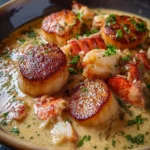
Lobster Scallop Chowder
Description
Lobster Scallop Chowder 🦞🥣 is a rich, buttery soup brimming with tender seafood, creamy broth, and coastal charm. Learn how to make it perfectly at home with tips, variations, and serving ideas.

